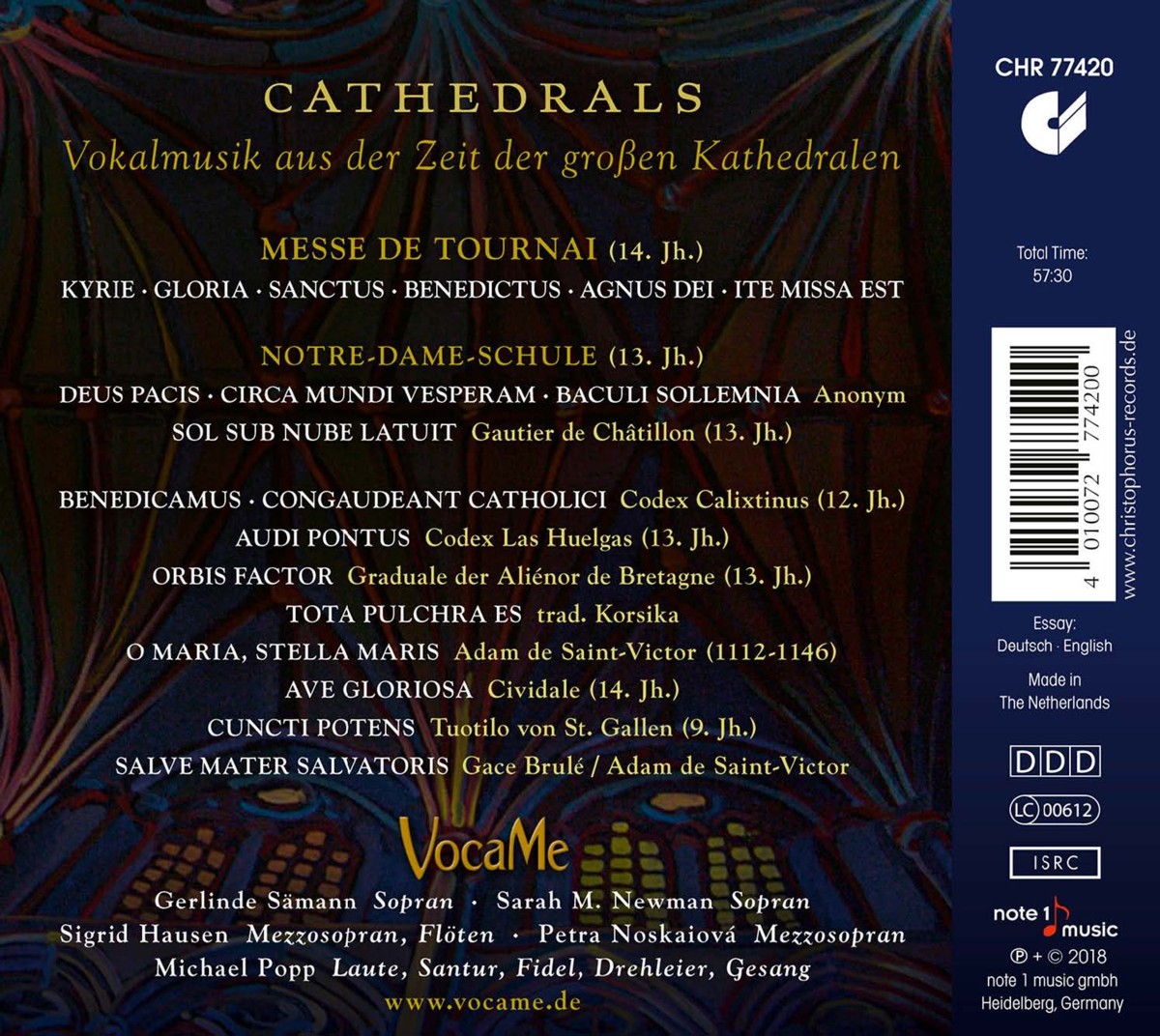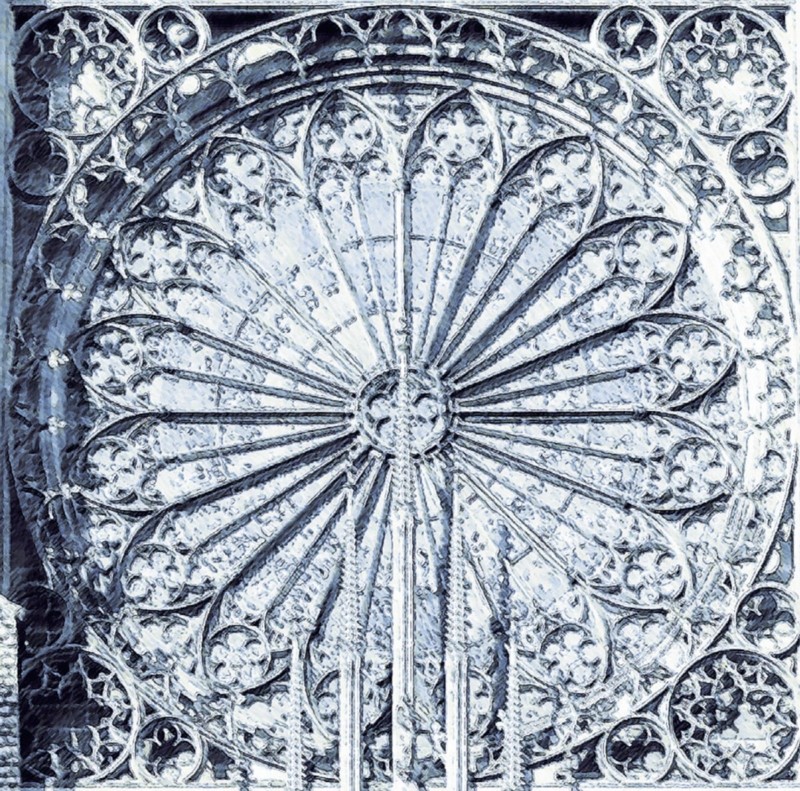
naxosdirect.com
Christophorus CHR77420
2018
I. Tota pulchra es [3:25] trad. korsisch, Text altchristlich, ca. 4. Jh.
II. Ave gloriosa [2:24] Cividale, 14. Jh.
Le polifonie primitive di cividale, Cod. LVI
III. Sol sub nube latuit [4:03] Gautier de Châtillon, Notre-Dame-Schule, 13. Jh.
Conductus zu Weihnachten, Florence Manuscript
IV. Kyrie [2:05] MESSE DE TOURNAI, 14. Jh.
V. O Maria, stella maris [4:08] Adam de Saint-Victor, 1112-1146
VI. Benedicamus [3:43] Hu 39 / cc 112
Codex Las Huelgas, 13. Jh. / Codex Calixtinus, 12. Jh.
VII. Baculi sollemnia [1:19] Notre-Dame-Schule, 13. Jh.
Conductus zum Fest der Beschneidung Christi, Manuscript F
VIII. Gloria [4:26] MESSE DE TOURNAI, 14. Jh.
IX. Cuncti potens [3:05] Tuotilo von St. Gallen, 9. Jh.
X. Deus Pacis [2:29] Notre-Dame-Schule, 13. Jh.
Conductus Segensspruch, Manuscript F
XI. Sanctus [1:24] MESSE DE TOURNAI, 14. Jh.
XII. Salve mater salvatoris [4:05] Gace Brulé / Adam de Saint-Victor, Text
XIII. Orbis factor [5:02] Graduale der Aliénor de Bretagne, 13. Jh.
XIV. Benedictus [ 1:32] MESSE DE TOURNAI, 13./14. Jh.
XV. Audi pontus [2:50] Codex Las Huelgas, 13. Jh. Hu 161
XVI. Agnus Dei [1:57] MESSE DE TOURNAI, 14. Jh.
XVII. Congaudeant catholici [5:31] Codex Calixtinus, 12. Jh. cc 96
XVIII. Circa mundi vesperam [1:39] Notre-Dame-Schule, 13. Jh.
Conductus zur Karwoche, Florence Manuscript
XIX. Ite missa est [2:13] MESSE DE TOURNAI, 14. Jh.
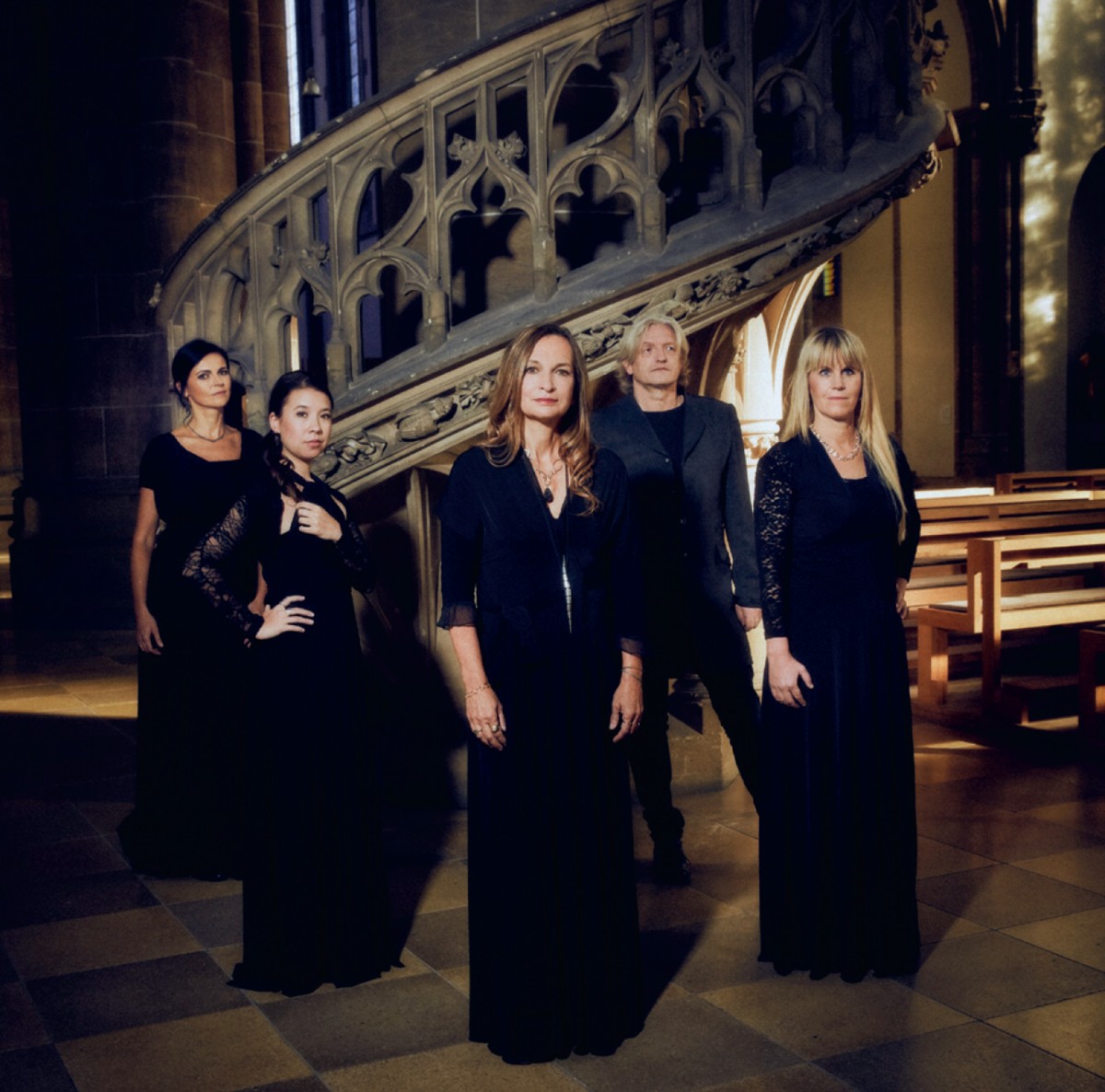

Michael Popp
Gerlinde Sämann — Sopran
Sarah M. Newman — Sopran
Sigrid Hausen — Mezzosopran, Flöten
Petra Noskaiová — Mezzosopran
Michael Popp — Laute, Santur, Fidel, Drehleier, Gesang
Ernst Schwindl — Drehleier
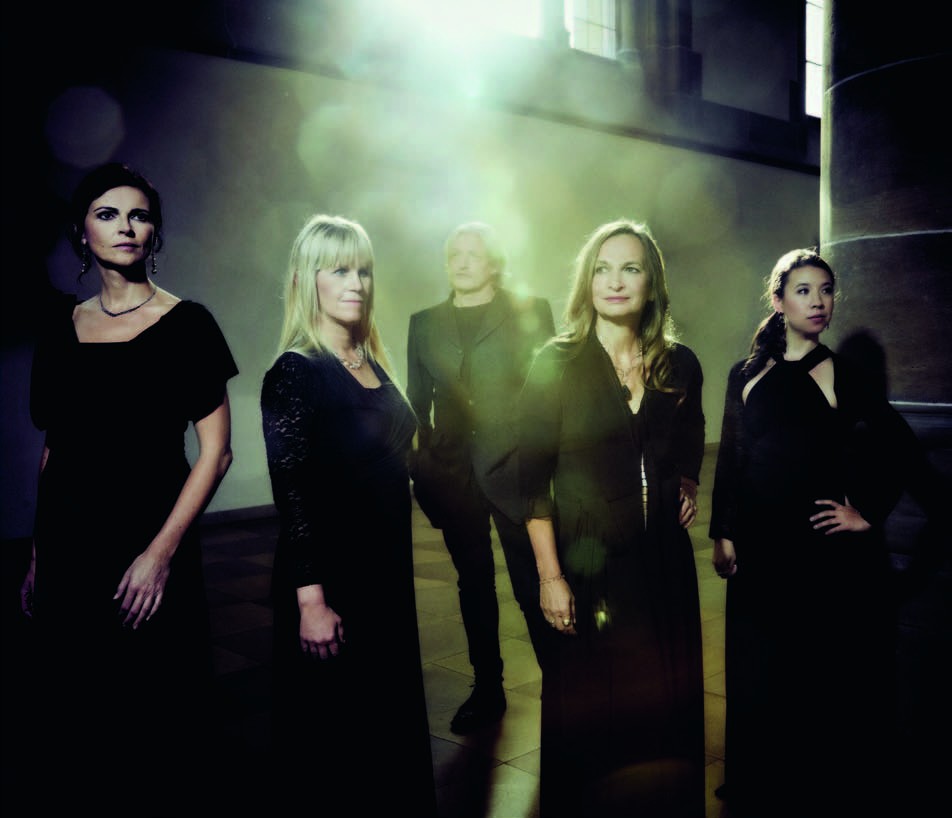
Recording: March 2018, München (Germany)
Recording producer & digital editing: Michael Popp, Johann Bengen
Mastering: Peter Hecker
Executive producer & booklet editor: Joachim Berenbold
Cover painting: Mike Keilbach (www.mikekeilbach.de)
Layout: Ricarda Djemili
Artist photos: Severin Schweiger (https://severinschweiger.com)
Translation: Jason F. Ortmann (English)
℗ + © 2018 note 1 music gmbh, Heidelberg, Germany
English liner notes
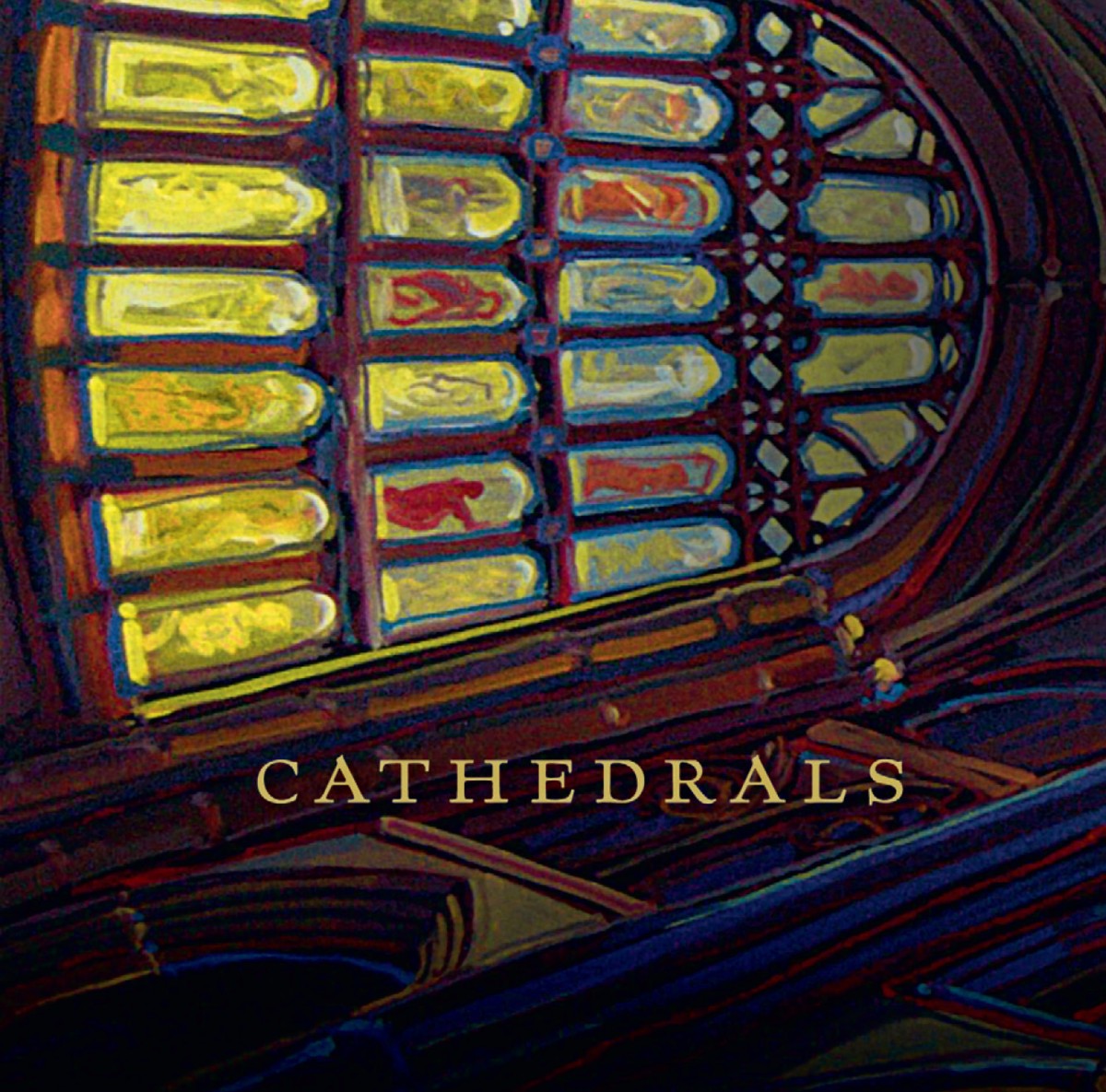
Cathedrals
Vokalmusik aus der Zeit der großen Kathedralen
Die großen lichtdurchfluteten Kirchenräume der Gotik, die
sich wie steingewordene Wunder ab dem 12. Jahrhundert in ganz Europa
ausgebreitet haben, inspirierten das Ensemble VocaMe zu dieser CD. Die
Kathedralen mit ihrer Harmonie der Proportionen, der scheinbaren
Schwerelosigkeit der Architektur, waren im Mittelalter gelebter
Schnittpunkt aller Wege und Kulturen, Stände oder sozialer
Schichten – Sinnbild göttlicher Wohnstatt und Einheit von
Klang-Licht-Raum.
Vier Sängerinnen mit einem berückenden Schmelz im Unisono,
großen Spektren im mehrstimmigen Gesang und die Klangfarben des
Multi-Instrumentalisten Michael Popp bilden die musikalische
Erweiterung und Deutung des Kirchenraums.
Das Programm besteht aus geistlicher Musik, die sich bis zur Gotik
entwickelt hat. Im Zentrum steht die Messe von Tournai aus dem 14.
Jahrhundert. Sie gilt als frühestes Zeugnis einer komplett
vertonten Messe, die sich in mittelalterlichen Handschriften finden
lässt. Wer sie geschrieben hat, ist unbekannt – es ist aber
wahrscheinlich die Zusammenstellung von Stücken verschiedener
Komponisten: die Kompositionstechniken einzelner Sätze sind zum
Teil ganz auf der Höhe der Zeit und modern, andere dagegen
verwenden alte Techniken aus früheren Zeiten, dass dies sowohl auf
eine unterschiedliche Entstehungszeit als auch verschiedene Regionen
schließen lässt.
Sigrid Hausen, eine der Sängerinnen: „Wie die Säulen
der Kathedrale stellen wir uns die Mess-Sätze der berühmten
Messe von Tournai vor, und zwischen diesen Säulen erklingen andere
geistliche Gesänge aus Frankreich, Spanien, Deutschland, zwischen
Volksfrömmigkeit und Versenkung, Anrufung und hoher
Spiritualität oszillierend …“
Paris ist zur Zeit der Gotik eines bedeutendsten der kulturellen
Zentren und von seiner Kathedrale aus verbreitet sich der neue Geist
der Gotik über ganz Europa. Im Umfeld seiner großen
Kathedrale versammelt sich die geistige Elite dieser Zeit und viele
neue Kompositionen des 13. Jahrhunderts stammen aus diesem Umfeld, der
sogenannten „Notre-Dame- Schule“. Die Kompositionen
zählen, wie auch die Messe von Tournai zur musikalischen
Hochkultur – Musik, die wahrscheinlich nur an den großen
Kathedralen zu hören war. Diese kombiniert VocaMe mit
volkstümlicheren oder schlichteren Melodien aus dem Codex
Calixtinus (Jakobsbuch) und dem Las Huelgas Codex u.a. So entsteht ein
Klangbild der Gotik von schlichter Einstimmigkeit bis zur
Prachtentfaltung der mittelalterlichen Mehrstimmigkeit.
Im Mittelpunkt steht dabei die Kraft der menschlichen Stimme. Die
variablen Klangfarben der Sängerinnen und der Instrumente sind wie
eine musikalische Interpretation der farbintensiven gotischen
Glasfenster und Rosetten.
Wie in einem Labor wird zerlegt, untersucht, entstaubt – wie bei
Restauratoren werden die Farben aufgefrischt, mit den freigelegten
musikalischen Gerüsten, der einzelnen Melodie – solistisch
oder unisono gesungen – experimentiert, arrangiert,
Begleitstrukturen erarbeitet, bis hin zur vielstimmigen vokalen
Prachtentfaltung, um instrumentale Kommentare und Akzente ergänzt
... Die Musik wird von Musiker und Zuhörer durchdrungen,
Resonanzen entstehen.
Die Kathedrale ist Abbild der göttlichen Wahrheit, Gleichgewicht,
Harmonie der Proportionen, Schwerelosigkeit, Licht und Farbe ...
– der Musik nahe!
Wir nennen solche Dinge schön, die leuchtende Farben haben
(Thomas von Aquin)
Cathedrals
Vocal music from the time of the great cathedrals
Spreading throughout Europe from the 12th century onwards, the vast
Gothic church spaces, like wonders of stone suffused with light,
inspired the Ensemble VocaMe to produce this CD. The cathedrals, with
their harmony of proportions and the perceived weightlessness of their
architecture, were a lively hub of all paths and cultures, estates or
social classes in the Middle Ages – a symbol of a divine abode
and a unity of sound, light and space.
Four singers with an enchanting fusion in unison and large spectra in
polyphonic singing, along with the tonal colours of
multi-instrumentalist Michael Popp, represent the musical extension and
interpretation of the church space.
The program consists of sacred music that evolved up to the Gothic
period. At its centre is the Tournai Fair held in the 14th century. It
is regarded as the earliest testimony of a mass which was entirely set
to music, as evidenced by medieval manuscripts. The composer who wrote
them remains unknown – but it is likely a compilation of pieces
written by different composers: the composition techniques of
individual movements are up-to-date and modern in some cases, while
others use old techniques from earlier times, suggesting both different
times and regions of origin.
Sigrid Hausen, one of the singers: “Like the pillars of the
cathedral, we picture the various movements of the famous mass of
Tournai, and between these pillars, other spiritual songs from France,
Spain and Germany resound, oscillating between popular piety and
absorption, invocation and high spirituality...”
During the Gothic period, Paris and its cathedral were one of the most
important cultural centres from whence the new Gothic spirit spread
throughout Europe. The intellectual elite of this period gathered
around its large cathedral and many new compositions of the 13th
century emanated from this environment, the so-called “Notre Dame
School”. The compositions, like the Tournai Mass, are part of a
high culture of music – music that could probably only be heard
in the great cathedrals. VocaMe combines this with more folk-like or
modest melodies from the Codex Calixtinus (book of Saint James) and the
Las Huelgas Codex, among others. Thus, a Gothic soundscape emerges,
ranging from simple monophony to the splendour of medieval polyphony.
The focus is on the power of the human voice. The variable timbres of
the singers and the instruments are like a musical interpretation of
the colourful Gothic glass and rose windows.
As in a laboratory, one disassembles, examines and purges, as restorers
would do; the colours are refreshed, the exposed musical frameworks are
experimented upon, the individual melody – sung solo or in unison
– is arranged, accompanying structures are worked out, right up
to the polyphonic unfurling of vocal magnificence, supplemented by
instrumental comments and accents... The music permeates musicians and
listeners, whereby resonances are created.
The cathedral acts as a reflection of divine truth, its balance,
harmony of proportions, weightlessness, light and colour... much like
its music!
We call beautiful such things that have bright colours.
(Thomas Aquinas)
